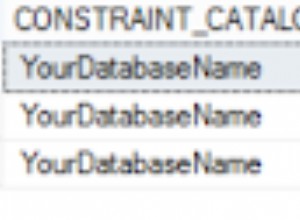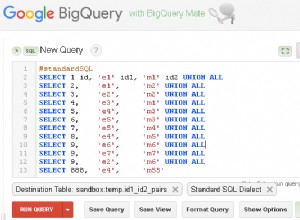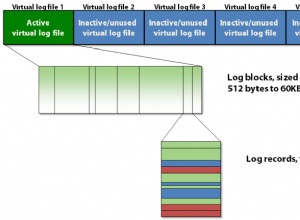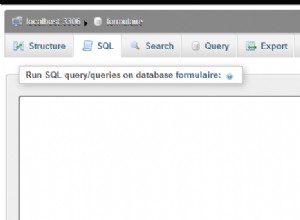returns setof refcursor significa que obtienes un ResultSet regular donde cada "fila" contiene otra ResultSet al llamar a getObject() :
Lo siguiente funciona para mí:
ResultSet rs = stmt.executeQuery("select * from usp_sel_article_initialdata_new1()");
if (rs.next())
{
// first result set returned
Object o = rs.getObject(1);
if (o instanceof ResultSet)
{
ResultSet rs1 = (ResultSet)o;
while (rs1.next())
{
int id = rs1.getInt(1);
String name = rs1.getString(2);
.... retrieve the other columns using the approriate getXXX() calls
}
}
}
if (rs.next())
{
// process second ResultSet
Object o = rs.getObject(1);
if (o instanceof ResultSet)
{
ResultSet rs2 = (ResultSet)o;
while (rs2.next())
{
......
}
}
}
Desde dentro de psql también puede usar select * from usp_sel_article_initialdata_new1() solo necesita usar FETCH ALL después. Consulte el manual para ver un ejemplo:http://www. postgresql.org/docs/current/static/plpgsql-cursors.html#AEN59018
postgres=> select * from usp_sel_article_initialdata_new1();
usp_sel_article_initialdata_new1
----------------------------------
<unnamed portal 1>
<unnamed portal 2>
(2 rows)
postgres=> fetch all from "<unnamed portal 1>";
?column?
----------
1
(1 row)
postgres=> fetch all from "<unnamed portal 2>";
?column?
----------
2
(1 row)
postgres=>
(Creé una función ficticia para el ejemplo anterior que solo devuelve una sola fila con el valor 1 para el primer cursor y 2 para el segundo cursor)
Editar :
Para que esto funcione, debe ejecutarse dentro de una transacción. Por lo tanto, la confirmación automática debe estar desactivada:
connection.setAutoCommit(false);




